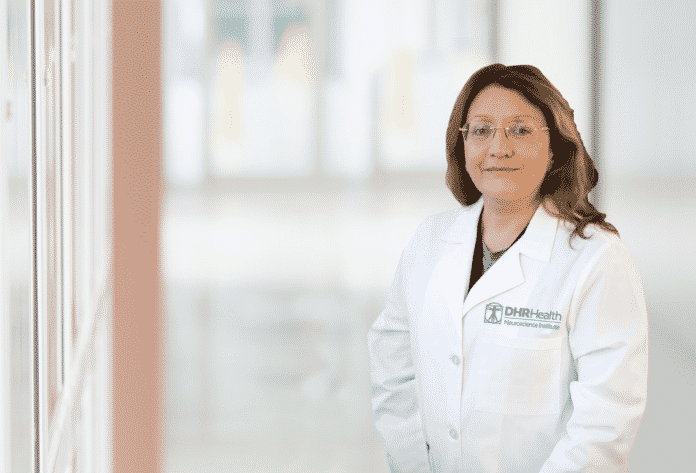
By: Patricia M. Fernandez, MD. MBA
Neurointerventional Radiology
DHR Health Neuroscience Institute
Stroke due to lack of adequate blood supply to the brain is a serious medical problem. According to the AHA, among Hispanic adults, 2.8% of men and 2.0% of women have had a stroke. A higher increase in stroke incidence is projected to be in Hispanic men.
One of the biggest public health challenges is that spanish-speaking Hispanics are less likely to know stroke symptoms. Thereafter, it is critical to raise awareness about stroke in our community.
Shortly after a cerebral artery supplying blood to the brain is occluded, the clinical manifestations of brain ischemia present. The most common stroke symptoms are numbness or weakness in the face, arm, or leg, especially on one side of the body, difficulty in speaking or understanding speech, visual problems, loss of balance, coordination problems or dizziness.
If any of these symptoms are present is critical to seek immediate medical attention.
The most effective way to assist a person having a stroke is to call 911. EMS are capable of transporting a patient quickly and to the closest medical facility that is best equipped to treat a patient experiencing a stroke. EMS providers can provide care during transportation and are also prepared to contact a hospital while in transit, in order to alert physicians about the arrival of a stroke patient.
When a patient arrives at a stroke center, there are treatments that can be used to recanalize an occluded brain artery. Alteplase (tPA) is a drug commonly used to dissolve clots and can be administered to stroke patients up to 4.5 hours after the symptoms onset. Furthermore, the neurointerventional techniques used to remove clots from brain arteries expand the time window to re-open arteries. However, regardless of the particular treatment offered to a stroke patient, the faster a patient is treated, the higher the chance of the patient making a good functional recovery.
In summary, when encountering a loved one with a possible stroke think FAST: Face weakness, Arm weakness, Speech difficulties and Time to call 911.
If you would like more information on stroke symptoms or would like to speak to one of our experts, please call DHR Health Neuroscience Institute at (956) 362- 8500.





